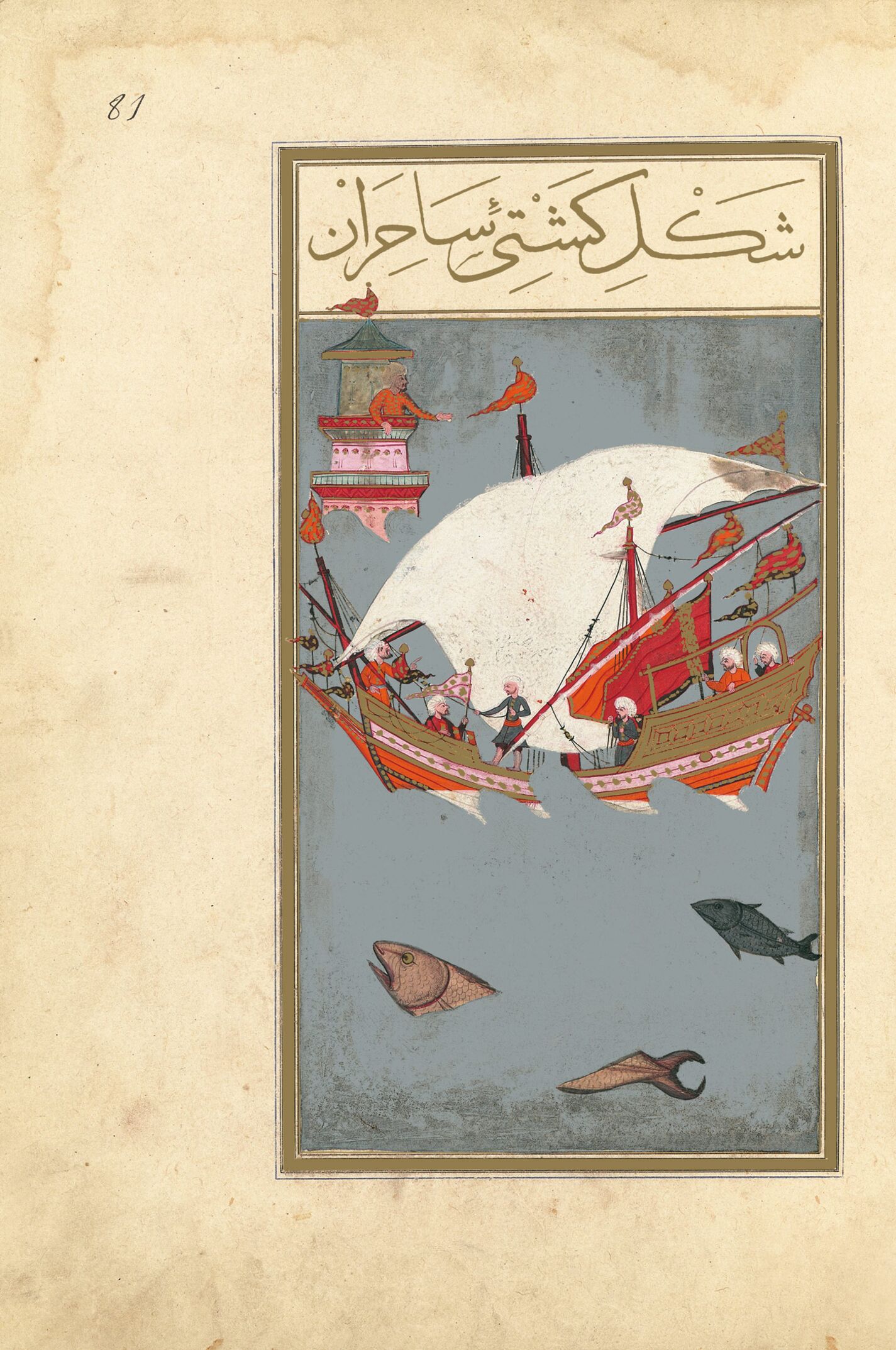The illustration shows a large Ottoman galley apparently in deep trouble on a raging sea, her sail billowing in the strong winds and six worried people on board. The waves are so high that they almost reach the balcony of a watchtower where another man seems to be trying to do something to save the boat from certain shipwreck. Two fish in the foreground observe the dramatic scene.
As much as it is an appealing illustration it is difficult to understand how it relates to its title which mentions the presence of a sorcerer aboard. Although the literary source of the story is unknown to me, the painting in the Kitab al-bulhan (f. 42r) clearly relates better to the title above for it shows a hooded, bearded character in the middle of the ship standing in front of a large cup from which smoky flames evaporate high into the air. He is obviously performing some kind of sorcery or divination and the scene is observed from above by a figure wearing a horned helmet (possibly Alexander the Great, also known as “the man with two horns”). Perhaps the artist of the Ottoman copy was accustomed to the story, so we might learn from this illustration that it ends with the destruction of the ship by God sending a formidable wind. The sorcerer aboard, however, is utterly inconspicuous and the figure on the tower does not wear a horned helmet. Therefore, as demonstrated in several other instances, it seems more likely that the painter was unfamiliar with the subject of the story.
Stefano Carboni
The Metropolitan Museum of Art
Curatorial Assistant in Islamic Art
(Fragment of the Book of Felicity commentary volume)

The illustration shows a large Ottoman galley apparently in deep trouble on a raging sea, her sail billowing in the strong winds and six worried people on board. The waves are so high that they almost reach the balcony of a watchtower where another man seems to be trying to do something to save the boat from certain shipwreck. Two fish in the foreground observe the dramatic scene.
As much as it is an appealing illustration it is difficult to understand how it relates to its title which mentions the presence of a sorcerer aboard. Although the literary source of the story is unknown to me, the painting in the Kitab al-bulhan (f. 42r) clearly relates better to the title above for it shows a hooded, bearded character in the middle of the ship standing in front of a large cup from which smoky flames evaporate high into the air. He is obviously performing some kind of sorcery or divination and the scene is observed from above by a figure wearing a horned helmet (possibly Alexander the Great, also known as “the man with two horns”). Perhaps the artist of the Ottoman copy was accustomed to the story, so we might learn from this illustration that it ends with the destruction of the ship by God sending a formidable wind. The sorcerer aboard, however, is utterly inconspicuous and the figure on the tower does not wear a horned helmet. Therefore, as demonstrated in several other instances, it seems more likely that the painter was unfamiliar with the subject of the story.
Stefano Carboni
The Metropolitan Museum of Art
Curatorial Assistant in Islamic Art
(Fragment of the Book of Felicity commentary volume)